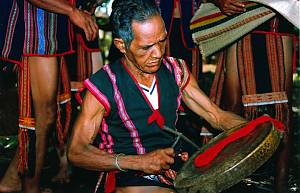To be kept alive, intangible cultural heritage must be relevant to its community, continuously recreated and transmitted from one generation to another. There is a risk that certain elements of intangible cultural heritage could die out or disappear without help, but safeguarding does not mean fixing or freezing intangible cultural heritage in some pure or primordial form. Safeguarding intangible cultural heritage is about the transferring of knowledge, skills and meaning. Transmission – or communicating heritage from generation to generation – is emphasized in the Convention rather than the production of concrete manifestations such as dances, songs, musical instruments or crafts. Therefore, to a large extent, any safeguarding measure refers to strengthening and reinforcing the diverse and varied circumstances, tangible and intangible, that are necessary for the continuous evolution and interpretation of intangible cultural heritage, as well as for its transmission to future generations.
Safeguarding measures to ensure that intangible cultural heritage can be transmitted from one generation to another are considerably different from those required for protecting tangible heritage (natural and cultural). However, some elements of tangible heritage are often associated with intangible cultural heritage. That is why the Convention includes, in its definition of intangible cultural heritage, the instruments, objects, artefacts and cultural spaces associated with it.

© Institute of Culture and Information / Duong Thanh Giang
Does this mean that intangible heritage should always be safeguarded, or be revitalized at any cost? As any living body, it follows a life cycle and therefore some elements are likely to disappear, after having given birth to new forms of expressions. It might be that certain forms of intangible cultural heritage, despite their economic value, are no longer considered relevant or meaningful for the community itself. As indicated in the Convention, only intangible cultural heritage that is recognized by the communities as theirs and that provides them with a sense of identity and continuity is to be safeguarded. By ‘recognition’, the Convention means a formal or, more often, informal process by which communities acknowledge that specific practices, representations, expressions, knowledge and skills and, if appropriate, associated instruments, objects, artefacts and cultural spaces, form part of their cultural heritage.
Safeguarding measures must always be developed and applied with the consent and involvement of the community itself. In certain cases, public intervention to safeguard a community’s heritage may be undesirable, since it may distort the value such heritage has for its community. Moreover, safeguarding measures must always respect the customary practices governing access to specific aspects of such heritage, for example, sacred intangible cultural heritage manifestations or those that are considered secret.